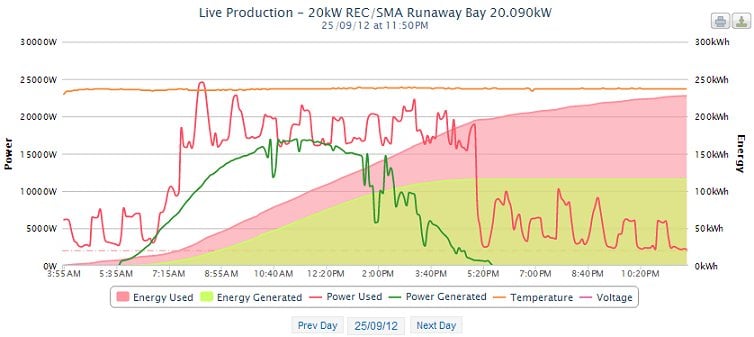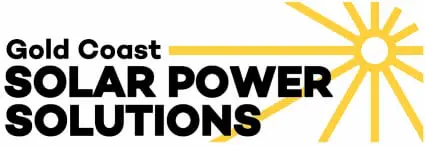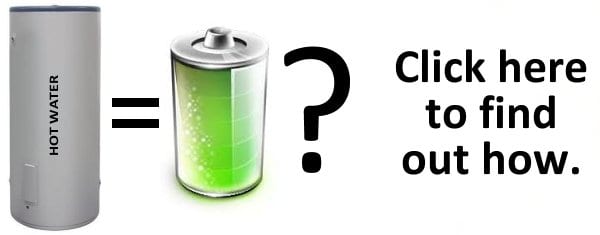When you have a low solar power net feed in tariff like we do in QLD and NSW these days does it really make sense to install solar power? The answer depends on how you use your power. Here at Gold Coast Solar Power Solutions we recommend you implement the following to see your investment in solar power bring you the maximum returns possible.
How The Net Feed In Tariff Works?
When a solar power system is installed in Queensland the system is connected to a net feed in tariff. What this means is that power your solar panels generate is first off consumed at your property with any solar power that is surplus to your requirements at any given time being sent back to the grid, this surplus power is your net feed in power. Some electricity retailers will pay you a rate of 6c to 10c per kWh for this power that is surplus to your requirements, but to put this in perspective an average residential property or small commercial business are charged a rate of 27c per kWh for power they purchase.
Obviously 27c per kWh is a big difference to 6c to 10c per kWh therefore to maximise your return, it will work out in your favour to export as little of your solar power to the grid as possible; you are better off using the power on site when it’s generated.

How To Maximise Your Power Savings?
What you need to do is maximise the amount of power you use when your solar panels are generating power, so the renewable power you produce is going straight into powering your property, not just being sent back to the grid. To achieve this, use your power hungry appliances late in the morning to early afternoon, not during the evening or night when your solar power output is at it’s lowest.
This strategy will obviously work out best if people are at home during the day, as very little power will be being used whilst no one is home. Your solar power will be powering any loads that you have on such as fridges and stand-by loads, then as soon as they are covered you would have surplus solar power going back to the grid at the lower rate via the net feed in tariff.
Solar Power Net Feed in tariff rate
On the Gold Coast there are two solar power net feed in tariff’s available, and it all depends when you lodged your paperwork with Energex as to which one is applicable for you. If your solar power system was applied for before the 10th of July 2012 you should be on the old Queensland solar power net feed in tariff of 44c per kWh, this 44c was paid for solar power that was surplus to your power consumption. Some electricity retailers are prepared to pay a higher rate for your solar surplus; with some paying up to 10c per kWh (for up to 5kW solar systems) on top of the Government legislated feed in tariff, which just happens to be nothing now.
With that 10c additional feed in that some electricity companies currently pay you 54c per kWh for your surplus solar power if you are on the old 44c solar power net feed in tariff and 10c if you are on the current QLD net feed in tariff, this is so much lower as it no longer is supported by the government. If you have the old Queensland solar power net feed in tariff learn how to maximise your solar power returns here.
If you are a new solar power customer and have just recently lodged an application with Energex or are looking to in the near future then you will be receiving the new Queensland solar power net feed in tariff of up to 10c per kWh depending on your electricity retailer. Please check with your electricity retailer to see what they will pay you for your surplus solar power as every retailer is different. With this solar power net feed in tariff you are best to use as much of your solar power as possible rather than sell it back to the grid at the lower rate.
Size of your solar power system – what’s best?
With any solar power net feed in tariff it is going to save you the most power and therefore money by installing the largest system your site and budget can handle, as the larger the system the more power is being generated and the less power you are having to purchase from the grid. Another benefit with the larger systems is that your property will always be using some power, whether it be fridges or stand by loads. These appliances that are using power during the day need to be powered by your solar power system before power is fed back to the grid in surplus.

Although you will save more money with a larger system than with a smaller solar power system this does not necessarily mean that your Return On Investment (ROI) will be best with a larger solar power system. On the current lower solar power net feed in tariff of up to 10c your returns are far better if you are using all the power produced as each kWh of power generated is saving you 27c rather than a maximum of 10c if its going back to the grid as surplus. That means that a solar power system at a site that is consuming all the power it produces will pay for itself heaps faster than a system that is sending all the power it produces back to the grid on the solar power net feed in tariff, even if it is going back at 10c per kWh.
To ensure your Return On Investment (ROI) is the best possible we recommend sizing your solar power system to minimise the amount of solar power going back to the grid on the net feed in tariff; this is where our site inspection and analysis of your power consumption allows Gold Coast Solar Power Solutions to provide you with the very best possible solar power solution for your unique situation!
Got A Question About Solar Power? Click Here For Answers!
- Does the temperature affect how much power solar panels make?
- Mono or Polycrystalline solar panels – does it matter?
- Solar Power Production on the Gold Coast – What can I expect?
- Solar Panel Efficiency – Does it matter?
- Solar Panels are different – Does it matter which solar panel?
- Solar Panel diodes – what are they and what do they do?
- 3 Phase Solar Inverters – Do you need one?



